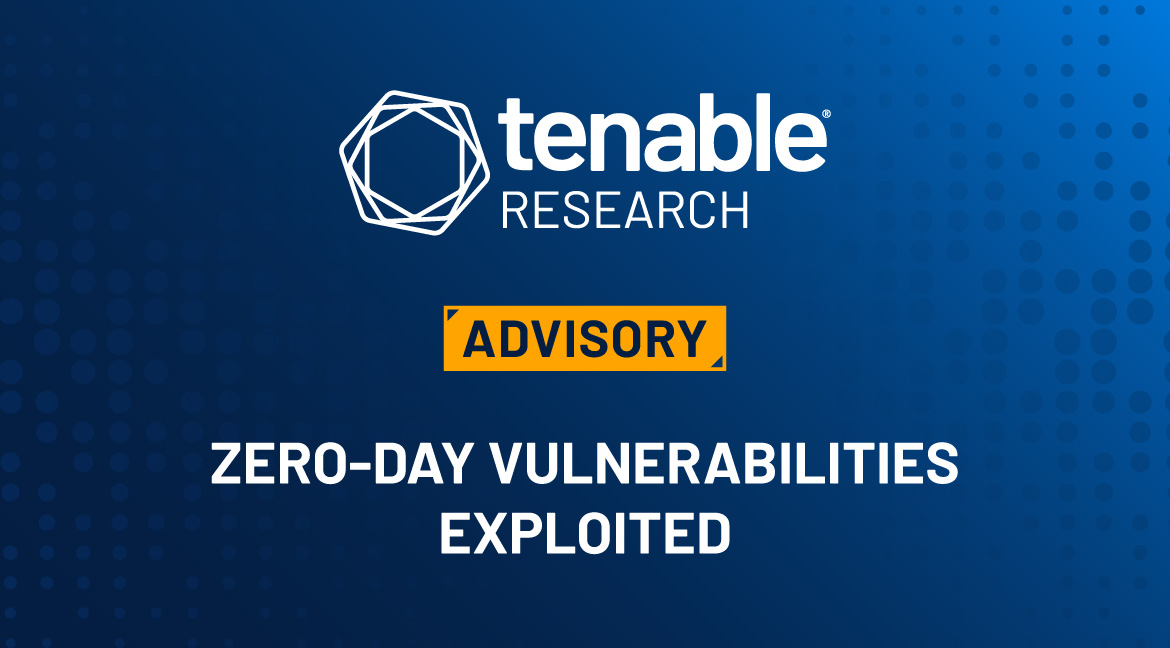CVE-2023-46805, CVE-2024-21887: Zero-Day Vulnerabilities Exploited in Ivanti Connect Secure and Policy Secure Gateways

Two zero-day vulnerabilities in Ivanti Connect Secure and Ivanti Policy Secure have been exploited in the wild, with at least one attack attributed to nation-state actors.
Update February 2: The blog has been updated to include information from the US Cybersecurity and Infrastructure Security Agency (CISA) supplemental update to Emergency Directive ED 24-01 and a link to our latest blog post on two additional Ivanti CVEs. The Solution section has also been updated.
Background
On January 10, Ivanti released a security advisory for two zero-day vulnerabilities that were exploited in-the-wild in limited, targeted attacks.
| CVE | Description | CVSSv3 |
|---|---|---|
| CVE-2023-46805 | Ivanti Connect Secure and Ivanti Policy Secure Authentication Bypass Vulnerability | 8.2 |
| CVE-2024-21887 | Ivanti Connect Secure and Ivanti Policy Secure Command Injection Vulnerability | 9.1 |
Both flaws were exploited as part of a vulnerability chain. At the time the advisory was released, Ivanti noted that no patch has been released, however a mitigation script is available and should be used immediately. The advisory goes on to warn that “It is critical that you immediately take action to ensure you are fully protected.”
Analysis
CVE-2023-46805 is an authentication bypass vulnerability in the web component of Ivanti Connect Secure (ICS), previously known as Pulse Connect Secure and Ivanti Policy Secure. This vulnerability allows an attacker to bypass control checks and access restricted resources. It affects all supported versions of Ivanti ICS and Policy Secure 9.x and 22.x.
CVE-2024-21887 is a command injection vulnerability in the web component of Ivanti ICS and Policy Secure that can be abused to execute arbitrary commands by an authenticated user. As with CVE-2023-46805, this vulnerability also affects all supported versions of Ivanti ICS and Policy Secure 9.x and 22.x.
Zero-day exploitation began in December 2023
According to Ivanti and a blog by Volexity, these two vulnerabilities were exploited in the wild in a chained attack for unauthenticated remote code execution (RCE) as early as December 3, 2023.
Attacks involved implantation of GLASSTOKEN webshell, attributed to UTA0178
In its blog, Volexity attributes the zero-day exploitation of these flaws to an unknown threat actor referred to as UTA0178, which they believe is a “Chinese nation-state level threat actor.”
As part of these attacks, UTA0178 was observed deploying webshells to multiple systems. Webshells give attackers the ability to maintain persistence on a network after compromise, even if the affected organization patches the flaws used to gain access to the network.
The webshell, called GLASSTOKEN, was found on both internet-facing and internal assets.
For more detailed analysis of the attacks, please refer to the Volexity blog.
Exploitation is widespread, additional malware families identified
On January 15, Ivanti updated its knowledge base article with additional information including the fact that there are now “less than 20 customers” impacted.
Volexity also published a follow-up blog post on January 15 into attacks involving CVE-2024-21887 and CVE-2023-46805. According to Volexity, exploitation of these flaws is now “widespread” globally, which includes the compromise of over 1,700 Ivanti Connect Secure (ICS) appliances, including the use of a variant of the webshell called GIFTEDVISITOR. However, the firm says that the number of compromised organizations may “likely be higher.”
Additionally, Volexity says that exploitation attempts have been observed by other groups besides UTA0178.
Mandiant published its own observations in a blog post on January 12, linking the activity to a group they refer to as UNC5221. According to Mandiant, UNC5221 has “leveraged multiple custom malware families” which includes LIGHTWIRE, a webshell, THINSPOOL, a webshell dropper, WARPWIRE, a credential harvester, WIREFIRE, another webshell and ZIPLINE, a passive backdoor.
On January 16, Palo Alto Networks’ Unit 42 published a blog post noting the observation of 30,089 exposed instances of ICS across 141 countries as of January 9 and that they’ve encountered incident response cases involving this exploit chain.
On January 19, the US Cybersecurity and Infrastructure Security Agency (CISA) released their first emergency directive (ED), ED 24-01, warning of the threat these vulnerabilities pose to Federal Civilian Executive Branch (FCEB) agencies. The emergency directive notes the observation of widespread successful exploitation and warns that immediate action must be taken.
On January 31, CISA released a supplemental ED with updated guidance in the wake of continued exploitation of affected devices. According to the supplemental ED, agencies running affected products are to "disconnect all instances of Ivanti Connect Secure and Ivanti Policy Secure solution products from agency networks" no later than 11:59PM on Friday February 2, 2024. Additional actions are listed in the directive and we recommend that you review the steps CISA has outlined and take appropriate action.
For more information, please visit our latest frequently asked questions blog post.
Historical targeting of Pulse Connect Secure
Previously, Pulse Connect Secure has been targeted by a variety of threat actors including ransomware groups and other nation-state aligned threat actors over the last five years:
| CVEs | Description |
|---|---|
| CVE-2019-11510 | Ivanti Pulse Connect Secure Arbitrary File Read Vulnerability |
| CVE-2019-11539 | Ivanti Pulse Connect Secure and Policy Secure Command Injection Vulnerability |
| CVE-2020-8243 | Ivanti Pulse Connect Secure Code Injection Vulnerability |
| CVE-2020-8260 | Ivanti Pulse Connect Secure Unrestricted File Upload Vulnerability |
| CVE-2021-22893 | Ivanti Pulse Connect Secure Authentication Bypass Vulnerability |
| CVE-2021-22894 | Ivanti Pulse Connect Secure Buffer Overflow Vulnerability |
| CVE-2021-22899 | Ivanti Pulse Connect Secure Command Injection Vulnerability |
| CVE-2021-22900 | Ivanti Pulse Connect Secure Multiple Unrestricted Uploads Vulnerability |
We’ve also published several blog posts about vulnerabilities in Pulse Connect Secure:
In addition to these blogs, we published a blog about the continuous targeting of SSL VPNs and the importance of patching such flaws in August 2021. The blog, titled “Hold the Door: Why Organizations Need to Prioritize Patching SSL VPNs,” references CVE-2019-11510, a critical vulnerability in Ivanti Pulse Connect Secure that has been routinely targeted by attackers for nearly five years.
Proof of concept
At the time this blog post was published, no public proof-of-concept (PoC) had been identified for either of these vulnerabilities. However, given the severity of these flaws being chained together and the previous unknown attacks utilizing these vulnerabilities in the wild, we anticipate that exploit code may be available soon.
Solution
As of January 10, Ivanti does not have patches readily available to address these vulnerabilities. However, they have released a mitigation file (mitigation.release.20240107.1.xml) for customers to utilize immediately until patches are released. According to Ivanti, patches will begin being released the week of January 22, with the final patches expected the week of February 19. The following table from Ivanti reflects their expected release date for know affected versions:
| Version | Product | Expected Release Week |
|---|---|---|
| 9.1R14.4 | Ivanti Connect Secure | Released January 31 |
| 9.1R15.3 | Ivanti Connect Secure | Week of February 12 |
| 9.1R16.3 | Ivanti Connect Secure | Week of January 29 |
| 9.1R17.2 | Ivanti Connect Secure | Released January 31 |
| 9.1R18.3 | Ivanti Connect Secure | Released January 31 |
| 22.1R6.1 | Ivanti Connect Secure | Week of February 19 |
| 22.2R4.1 | Ivanti Connect Secure | Week of February 12 |
| 22.3R1.1 | Ivanti Connect Secure | Week of January 29 |
| 22.4R1.1 | Ivanti Connect Secure | Week of February 12 |
| 22.4R2.2 | Ivanti Connect Secure | Released January 31 |
| 22.5R1.1 | Ivanti Connect Secure | Released January 31 |
| 22.5R2.2 | Ivanti Connect Secure | Week of February 19 |
| 22.6R1.1 | Ivanti Connect Secure | Week of February 12 |
| 22.6R2.2 | Ivanti Connect Secure | Week of January 29 |
| 9.1R14.2 | Ivanti Policy Secure | Week of January 29 |
| 9.1R15.1 | Ivanti Policy Secure | Week of February 12 |
| 9.1R16.1 | Ivanti Policy Secure | Week of January 29 |
| 9.1R17.2 | Ivanti Policy Secure | Week of January 22 |
| 9.1R18.3 | Ivanti Policy Secure | Week of January 22 |
| 22.1R1.1 | Ivanti Policy Secure | Week of February 12 |
| 22.1R6.1 | Ivanti Policy Secure | Week of February 12 |
| 22.3R1.1 | Ivanti Policy Secure | Week of January 29 |
| 22.2R3.1 | Ivanti Policy Secure | Week of February 12 |
| 22.4R1.1 | Ivanti Policy Secure | Week of January 22 |
| 22.5R1.1 | Ivanti Policy Secure | Week of January 22 |
| 22.6R1.1 | Ivanti Policy Secure | Week of January 29 |
| 22.5R1.5 | ZTA | Week of January 29 |
| 22.6R1.3 | ZTA | Released January 31 |
Identifying affected systems
A list of Tenable plugins for these vulnerabilities can be found on the individual CVE pages for CVE-2023-46805 and CVE-2024-21887 as they’re released. These links will display all available plugins for these vulnerabilities, including upcoming plugins in our Plugins Pipeline.
Get more information
- Tenable blog post: CVE-2023-46805, CVE-2024-21887, CVE-2024-21888 and CVE-2024-21893: Frequently Asked Questions for Vulnerabilities in Ivanti Connect Secure and Policy Secure Gateways
- Ivanti Advisory: CVE-2023-46805 (Authentication Bypass) & CVE-2024-21887 (Command Injection) for Ivanti Connect Secure and Ivanti Policy Secure Gateways
- Ivanti KB Article: KB CVE-2023-46805 (Authentication Bypass) & CVE-2024-21887 (Command Injection) for Ivanti Connect Secure and Ivanti Policy Secure Gateways
- Ivanti Blog Post: Security Update for Ivanti Connect Secure and Ivanti Policy Secure Gateways
- Volexity Blog: Active Exploitation of Two Zero-Day Vulnerabilities in Ivanti Connect Secure VPN
- CISA: Emergency Directive 24-01: Mitigate Ivanti Connect Secure and Ivanti Policy Secure Vulnerabilities
Change Log
Update February 2: The blog has been updated to include information from the US Cybersecurity and Infrastructure Security Agency (CISA) supplemental update to Emergency Directive ED 24-01 and a link to our latest blog post on two additional Ivanti CVEs. The Solution section has also been updated.
Update January 19: Updated the Analysis section to note CISA released Emergency Directive 24-01 concerning mitigation of the Ivanti Connect Secure and Ivanti Policy Secure vulnerabilities CVE-2023-46805 and CVE-2024-21887.
Update January 16: The Analysis section has been updated to include updates from Ivanti as well as links to additional analysis from Volexity, Mandiant and Palo Alto Networks.
Join Tenable's Security Response Team on the Tenable Community.
Learn more about Tenable One, the Exposure Management Platform for the modern attack surface.
- Exposure Management
- Vulnerability Management



